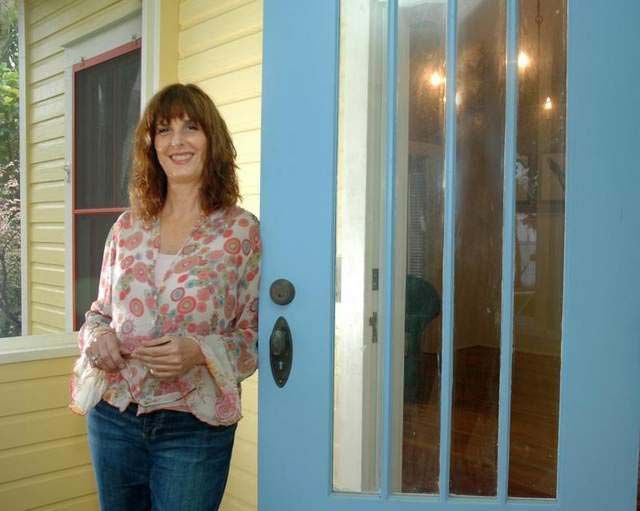The article Q&A: Designer advocates repurposed rooms and furnishings was published in Florida Today July 13, 2012
* available for download
Q&A: Designer advocates repurposed rooms and furnishings |
| Christine Ganoe, interior designer and owner of Concepts & Dimensions, stands on the front porch of a cottage along Indian River Drive in Cocoa. / Malcolm Denemark/FLORIDA TODAY |
According to interior designer Christine E. Whiteley, ASID of Concepts & Dimensions, the ultimate goal of an interior designer should be “to provide a master plan that balances an increase of enjoyment of the time spent at home — to the smart stewardship of how the priorities are budgeted.”
The foundation of a great design, she says, is a thorough understanding of a client’s “values, personal style and priorities” that only can be achieved by being a good listener.
Working with new construction and remodeling projects for more than 30 years, Whiteley has won several design awards, including the Home Builders and Contractors Association of Brevard Parade of Homes, Best in Category/Remodel as well as the National Dream Home Silver Award for Best Kitchen Remodel.
Question: Space planning is important in the building process, but how can you help homeowners make the most of what they already have? What are some creative ways to use dining room space or formal living room space that is no longer used for the intended purposes?
Whiteley: Step back from your daily routine and take a conscious look at the space you have available in your home and redefine its purpose to fit the way you live. For example, convert the formal dining room into your personal home gym, a music room or home office. The space is now functioning daily instead of holidays only.
Q: What are some ways that green practices are becoming more prevalent in interior design in existing homes as well as in newly built homes?
Whiteley: With repurposed furnishings, clients can redefine, reupholster, refinish and rediscover. In repurposed architectural elements, they can achieve the “new old house” look. Also, low VOC paints are becoming a standard, as well as organic, biodegradable paints that are a bit more labor-intensive to apply but give a depth of color not possible without faux finishing techniques. And, with “right sizing” of homes, clients are placing a value on the quality of detail versus the quantity of square footage.
Q: You've said there are two faces of a successful designer: a realist and a dreamer. How do you balance the two?
Whiteley: I listen to both the “wish list” as well as the frustrations and ask a lot of questions. Part of my role in the design collaboration is to bring a fresh approach to what the client often sees as their “standard situation.”
Q: How can interior design simplify people’s lives and make them more balanced? How do you change the mindset that design is only for looks, not for function?
Whiteley: The beauty enhances your daily experience, and the practical supports your priorities and lifestyle. One of the questions I ask is, “Why do we think it has to be a choice between one or the other?”

